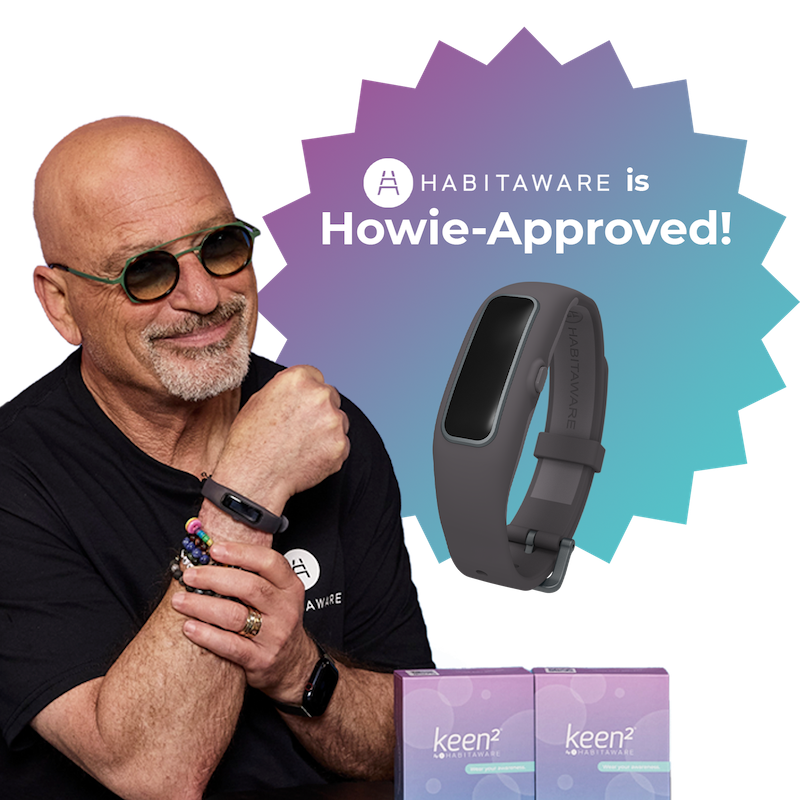Dear journalists,
Thank you! Thank you! Thank you!
Thank you for writing about Body Focused Repetitive Behaviors like excessive hair pulling (trichotillomania), compulsive skin picking (dermatillomania), chronic nail biting (onychophagia) and nose picking (rhinotillexomania).
My google alerts are on fire for all things “BFRB” related. It certainly wasn’t this way 10 years ago when we started HabitAware. It’s great to see the media raise awareness of this medical condition.
My name is Aneela Idnani and I started compulsive hair pulling in my tweens. I hid it for nearly 20 years because of the shame that I was doing this to myself. Little did I know back then that it was a mental health condition. The shame festered into a lifelong secret that made me sick.
Today, I am a BFRB awareness advocate, the co-founder of HabitAware and co-inventor of the Keen2 smart bracelet, a TIME Magazine Best Invention, that delivers real time awareness of these unwanted behaviors. With awareness, you can take control and change your behavior.
We are backed by research grants from the National Institute of Mental Health and the National Science Foundation. For 7 years we’ve helped 50k+ people in 80 countries and we’ve probably talked to upwards of 200k people with BFRBs - and their loved ones - through our training calls, events, peer coaching, online community and numerous online support groups. Through these data-rich conversations we’ve garnered a deep understanding of BFRBs, and our NIH-research-backed technology has ushered in a shift in protocol for in-the-know treatment professionals.
10 years ago there was little talk in the media of these conditions. We as a community - who are hurting in hiding - recognize the trend of awareness around BFRBs is crucial to feeling seen and healing.
But, I implore you to be careful. Do you know how devastating it can be to be diagnosed by a news article?
The first time I read the words “trichotillomania” I was 10+ years into my hair pulling trance. It was after a Yahoo search in my twenties - “why do I pull out my hair?” I found an article that explained this mental health condition from one of the few websites talking about it at the time: the Trichotillomania Learning Center non-profit website (now known as TLC Foundation for BFRBs). At the time, society wasn’t talking about “mental health,” it was focused on “mental illness” and I was pushed lower into my depression with this news.
Please remember the weight you bear when you write articles like “8 best products to help you stop your skin picking” or “this simple trick could stop skin picking, nail biting.”
Misunderstandings and misinformation are very common and an article like yours might be the FIRST TIME someone with the condition is learning “it’s a thing…”, “I am not alone” or “there are resources to help me.”
I hope you will take the following “mythbusters” into consideration to ensure readers have an accurate and current understanding of these conditions so they can get the help they need.
Myth #1: BFRBs are bad habits that can be stopped.
Truth: Hair pulling (trichotillomania), skin picking (dermatillomania), nail biting (onychophagia) and similar behaviors are self soothing / coping mechanisms. They are mental health conditions, not “bad habits.” The chronic nature of these medical conditions means that they cannot just be “stopped” completely. However, there is hope if sufferers are willing to learn the steps needed to take control and reduce these behaviors.
Myth #2: “Making a fist” can stop the behavior
Truth: While it’s true that Habit Reversal Training is one of the gold standard treatments for BFRBs, it is only a partial solution. The HRT protocol calls awareness to engage in a competing response and for external support from loved ones. The competing response recommended is to make a fist when a hair pulling, skin picking or nail biting urge occurs as a means of keeping the hands engaged in another activity that competes with the unwanted behavior. When journalists report, they tend to focus on the “make a fist” directive, with little regard to the awareness needed to do so or the support needed to maintain the strategy. With our work at HabitAware we provide both. Additionally, “just make a fist” is a temporary strategy. As we’ve seen in helping 82% of our customers reduce their unwanted hair pulling, skin picking and nail biting, lasting relief comes from fulfilling the person’s in-the-moment need based on the scenario of how they are feeling, where they are and what they are doing.
Myth #3: Fidgets will reduce the unwanted behavior
Truth: Reducing unwanted BFRBs is not as easy as “grab a fidget.” Through interviews with hundreds of people, HabitAware’s behavior change methodology aligns with leading treatment experts (see recommended list below): BFRBs are a signal that a person needs to take care of themselves.
When a person understands this, then they can do the work to identify the need and the right healthy replacement strategy for the moment. Fidgets may have a place in this formula, but should not be touted as a first line of defense.
Myth #4: Skincare, haircare, and nailcare products help get to the root of the problem
Topical solutions like wigs, makeup coverup, hydrocolloid patches, acrylic nails and hair regrowth serums are helpful in protecting a person with these conditions from bearing all to the public, but contribute to the cycle of hurting in hiding. These strategies have little use if the person still engages in their unwanted BFRB. These strategies are time consuming and financially wasteful if the person is not also doing the work to take control of the underlying conditions of hair pulling, skin picking, nail biting. I get the need to offer solutions with affiliate revenue capability. Do remember that HabitAware has an affiliate program. As these are mental health conditions, if all the strategies are focused on healing only the body, recovery remains a distant, unattainable goal for your readers.
Your work to raise awareness of what I call the “most common mental health condition you’ve never heard of” is truly important. During COVID, my company, HabitAware, facilitated two research studies that showed the rise of hair pulling, skin picking and nail biting due to the stress and uncertainty associated with lockdown and isolation.
We are available for expert interviews and have a team of doctors I can connect you to as well.
Wishing you love, strength & awareness,
Aneela Idnani
(HabitAware cofounder in trichotillomania recovery)


